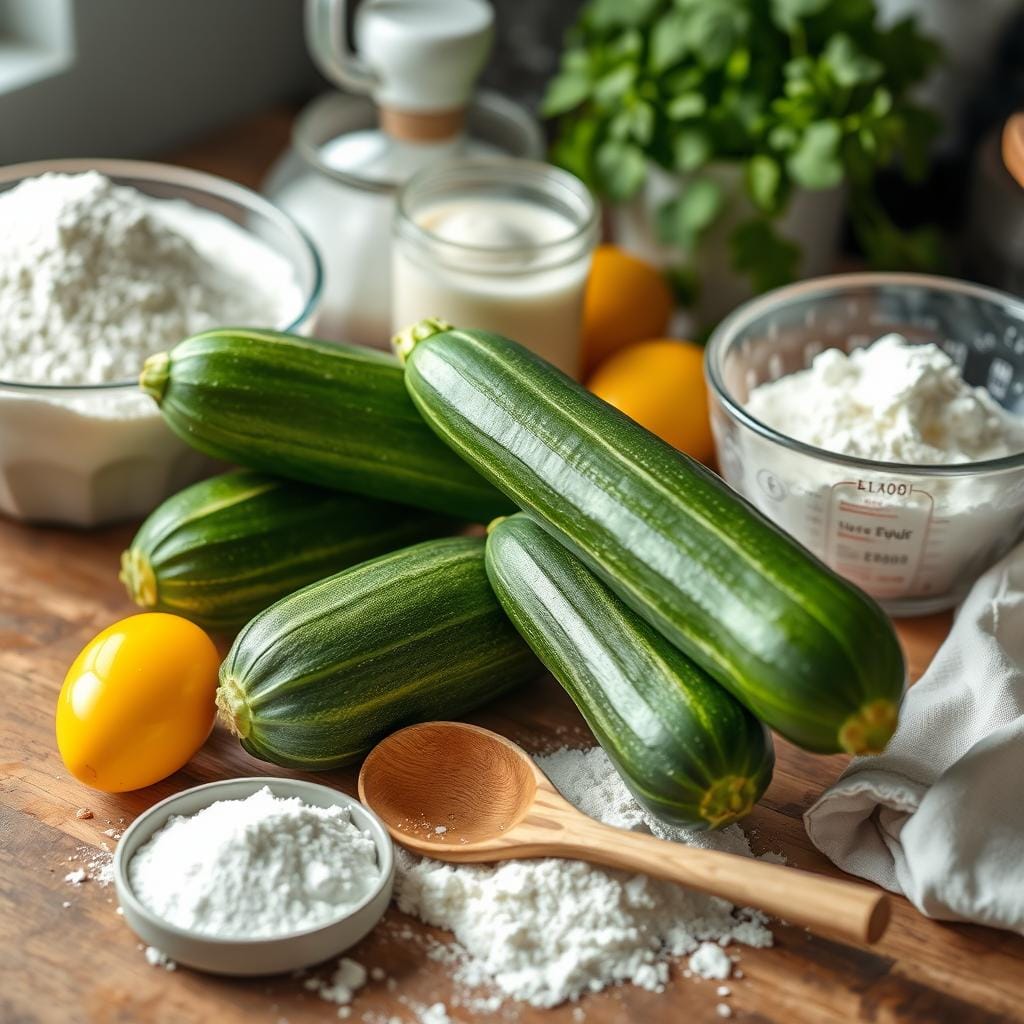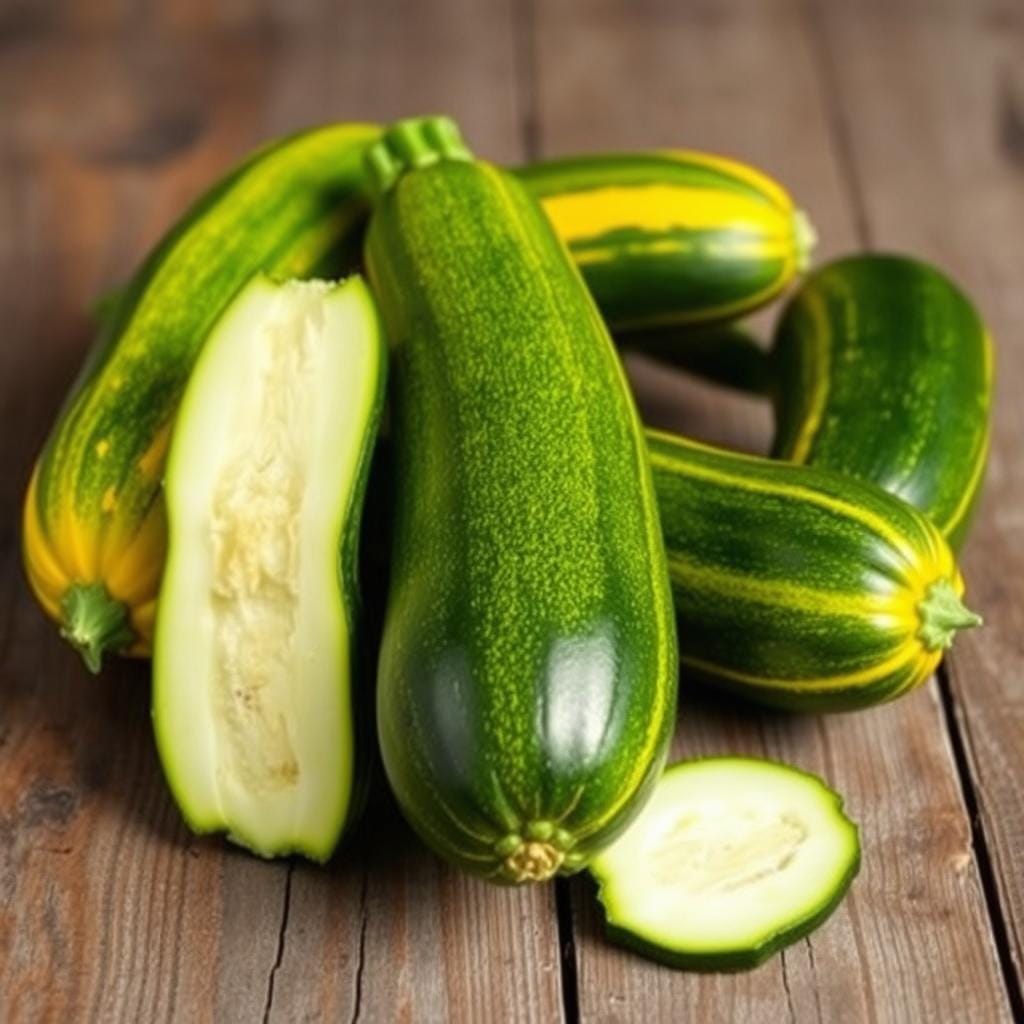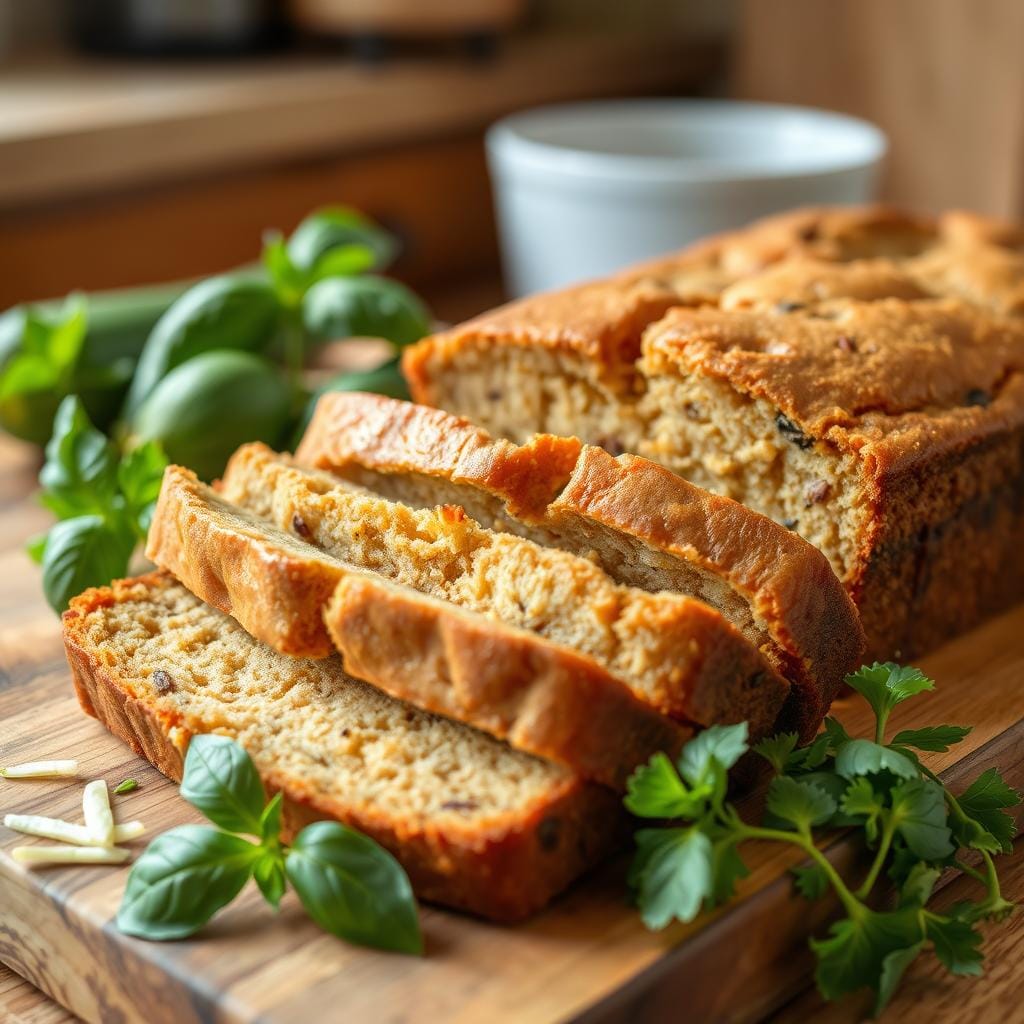Do you take the skin off zucchini for bread? As a home baker, I often wonder about zucchini’s role in bread. Does the skin make a difference? Should it be removed or left on? These are common questions that spark debate among bakers. Today, I’ll share my experience and tips to help you decide.
Baking with zucchini can change the game. It adds moisture, texture, and a bit of sweetness to your bread. But, should you peel the skin or not? This choice can greatly affect your bread’s outcome. In this guide, we’ll explore the benefits, textures, and practical tips to help you make the best choice for your zucchini bread.
Key Takeaways
- Zucchini skin can provide additional fiber and nutrients to your bread.
- Leaving the skin on can enhance the natural color and texture of the bread.
- Proper moisture management is crucial when using zucchini in bread recipes.
- Peeling the skin may be necessary in certain recipes or personal preferences.
- Effective preparation techniques, such as grating and moisture control, are key to successful zucchini bread baking.
Understanding Zucchini’s Role in Bread Making
The humble zucchini is key in zucchini bread ingredients. It boosts both the nutrition and texture of the bread. Discover why zucchini is a favorite in baking with zucchini.
Nutritional Benefits of Zucchini in Baked Goods
Zucchini is packed with nutrients. It’s low in calories but high in vitamins and minerals like vitamin C and potassium. It also has dietary fiber, which aids digestion and keeps you full.
How Zucchini Affects Bread Texture
Zucchini makes the bread moist and tender. Its high water content prevents dryness. It also adds a soft, cake-like texture.
Moisture Content and Its Importance
Getting the moisture right is key when baking with zucchini. Zucchini’s water content affects the bread’s structure and baking time. Proper moisture ensures the bread stays moist and flavorful.

“Zucchini is a versatile ingredient that can transform the texture and nutritional profile of your homemade bread. By understanding its unique properties, you can unlock the full potential of this summer squash in your baking adventures.”
Do You Take the Skin off Zucchini for Bread?
When making zucchini bread, a big question is whether to remove the skin or not. Both sides have good points, making it hard to decide.
Some say removing the skin makes the bread smoother. The skin can taste bitter or tough, which some don’t like. It might also not mix well with the rest of the bread, leading to unevenness.
Others think keeping the skin is better. It’s full of fiber, vitamins, and antioxidants, making the bread healthier. Plus, it keeps the bread looking green and appealing.
| Removing Zucchini Skin | Keeping Zucchini Skin |
|---|---|
| Smoother, more consistent texture | Retains more fiber and nutrients |
| Avoids potential bitterness or toughness | Adds natural color to the bread |
| May result in more even distribution of zucchini | Contributes to the overall health benefits of the bread |
Whether to remove or keep the skin depends on what you like. Try both ways to see which one you prefer.

“The skin of the zucchini is where a lot of the vegetable’s nutrients are concentrated, so keeping it on can be a great way to boost the nutritional value of your bread.”
The Benefits of Keeping Zucchini Skin in Your Bread
When making zucchini bread, whether to keep the skin on is key. Some say to peel the zucchini, but there are good reasons to keep the skin. It adds to the bread’s flavor and texture.
Added Fiber and Nutrients
The zucchini skin is full of fiber and important vitamins and minerals. Keeping the skin in your bread boosts its nutritional value. This gives your body a healthy dose of these nutrients.
Natural Color Enhancement
The green skin of the zucchini makes your bread look vibrant and natural. This makes your bread more appealing to look at. It stands out from breads made without skin.
Texture Benefits
The skin also affects the bread’s texture. It adds a rougher feel that contrasts with the soft inside. This makes the bread more interesting to eat.
Whether to keep or remove the skin is up to you. Knowing the benefits can help you choose. It makes your homemade zucchini bread better and more enjoyable.
When to Remove Zucchini Skin: Special Considerations
Deciding whether to remove the zucchini peel when baking bread often depends on personal taste. However, there are certain situations where peeling the skin is beneficial. Knowing these can help you choose wisely and make the best zucchini bread ingredients.
Removing the skin is a good idea for older or tougher zucchini. As zucchini ages, its skin gets thicker and more fibrous. This can affect the bread’s texture and feel. Peeling the skin can make the bread smoother and more even.
Also, think about how the bread looks. If you want a uniform, light-colored loaf, peeling the skin helps. This is crucial if you’re baking for a special event where looks matter a lot.
Dealing with Discoloration
Removing the zucchini peel might also prevent discoloration. Older zucchini or those grown in certain soils can make the bread look greenish. Peeling the skin can help avoid this.
“The decision to remove the zucchini peel ultimately comes down to your personal preferences and the specific characteristics of the vegetables you’re working with.”
In the end, whether to remove the zucchini peel is up to you. Think about your zucchini’s age and quality, and what you want your bread to look and feel like. This will help you decide the best way to use your zucchini bread ingredients.
Best Practices for Preparing Zucchini for Bread
When baking with zucchini, getting it right is crucial. This ensures your zucchini bread is both tasty and textured just right. Let’s look at the top tips for preparing zucchini to make your bread recipe a hit every time.
Proper Washing Techniques
Begin by washing your zucchini under cold water. This removes dirt, debris, and pesticides. Use a soft-bristled brush or your hands to scrub it gently. Then, dry it with a paper towel before moving on.
Grating Methods
The way you grate your zucchini matters a lot. For the best results, use a box grater or a food processor with a shredding attachment. This creates thin, even shreds that mix well into the batter. It ensures your zucchini bread recipe is moist and evenly textured.
Moisture Management Tips
- After grating, wrap the zucchini in a clean towel or cheesecloth. Squeeze out extra moisture. This helps your bread stay just right, not too wet or dense.
- If your zucchini is very wet, dry it with paper towels before adding it to the batter.
- Adjust the liquid in your recipe based on the zucchini’s moisture. This can vary with different squash.
By following these tips, you’ll make a deliciously moist and flavorful zucchini bread recipe. Your family and friends will love it.
Essential Tools for Zucchini Bread Preparation
Baking zucchini bread needs a few key tools for success. The right equipment helps make a moist, tasty loaf. Let’s look at the main items you’ll need to prepare the perfect zucchini bread ingredients and bake with zucchini.
- Grater or Food Processor: You’ll need a good grater or food processor to shred the zucchini. This ensures the right texture for your bread.
- Mixing Bowls: Get sturdy, medium-sized mixing bowls for both wet and dry ingredients. They help mix well and prevent spills.
- Hand or Stand Mixer: A good mixer, whether handheld or stand, makes mixing easier. It helps create a smooth batter.
- Loaf Pans: Choose quality loaf pans, like metal or silicone, for even baking. They make removing the loaves easy when cooled.
- Parchment Paper or Silicone Baking Mats: Use parchment paper or silicone mats to prevent sticking. They make removing the bread easy.
With these tools, you’re ready to bake perfect zucchini bread every time. Make sure you have all the necessary equipment before starting. This will make your zucchini bread baking journey smooth and fun.
“The right tools can make all the difference in the kitchen, especially when baking with zucchini. Having the essentials on hand ensures a stress-free and successful zucchini bread-making experience.”
Common Mistakes to Avoid When Using Zucchini in Bread
Baking zucchini bread can be fun and rewarding. But, it’s key to watch out for common mistakes. Knowing these can help your zucchini bread recipe always come out right.
Incorrect Moisture Balance
Getting the moisture right is crucial in zucchini bread baking. Zucchini has a lot of water, and too much can make your bread soggy or dry. Make sure to squeeze out extra water from the grated zucchini before mixing it into your dough.
Size and Preparation Errors
The size and how you prepare the zucchini matter a lot. If you take the skin off zucchini for bread, make sure the pieces are all the same size. This helps the bread bake evenly and prevents moisture pockets.
Storage Mistakes
Storing your zucchini bread right is important to keep it fresh. Don’t leave it out too long, as it can dry out or spoil. Store it in a sealed container or wrap it well in plastic. Freezing leftovers is a good way to keep it fresh for longer.
By avoiding these mistakes, you’ll bake the perfect do you take the skin off zucchini for bread every time.
Tips for Perfect Zucchini Bread Every Time
Baking zucchini bread is an art. With the right tips, you can master it. These expert-approved tips will help you create the perfect loaf, whether you’re new or experienced in baking with zucchini.
- Grate the zucchini properly: Use a box grater or food processor to shred the zucchini into fine, uniform pieces. This ensures even distribution and prevents dense pockets.
- Manage moisture: Zucchini is high in moisture. Make sure to squeeze out any excess liquid before adding it to the batter. This prevents your bread from becoming too dense or soggy.
- Adjust baking time and temperature: Zucchini bread often needs a longer baking time than traditional quick breads. Adjust your oven temperature to 325°F and keep an eye on the loaf, testing for doneness with a toothpick.
- Incorporate the right ingredients: Balance the moisture from the zucchini with dry ingredients like all-purpose flour, baking soda, and spices. This creates a perfectly moist and flavorful loaf.
- Allow for proper cooling: Once your zucchini bread is out of the oven, let it cool completely on a wire rack before slicing. This helps the bread hold its shape and texture.
By following these simple tips, you’ll be on your way to baking the most delectable zucchini bread. Your friends and family will love it. Happy baking!
Storage and Shelf Life of Zucchini Bread
Storing your homemade zucchini bread right is key to keeping it fresh and tasty. Whether you’re making a zucchini bread recipe or adding zucchini to your baked goods, knowing the best storage tips is important. It helps keep your creations fresh for longer.
Proper Storage Methods
After your zucchini bread cools down, it’s time to think about where to store it. For the best taste, keep it in an airtight container at room temperature. This keeps the bread moist and soft. Don’t store it in the fridge, as it can get dry and hard.
Freezing Guidelines
If you want to keep your zucchini bread even longer, the freezer is your go-to. Wrap it in plastic wrap or foil, then put it in a freezer bag or airtight container. Frozen properly, it can last up to 3 months. Just thaw it at room temperature or in the fridge before you slice and serve.
Learning how to store zucchini bread well means you can enjoy its moist, flavorful goodness for days or weeks. Mastering storage tips lets you indulge in this favorite quick bread whenever you want.
Conclusion
Whether to take the skin off zucchini for bread is up to you. Leaving the skin on adds fiber and nutrients. It also gives a unique texture. On the other hand, removing the skin makes the bread smoother.
It’s important to prepare the zucchini well, no matter what. Make sure to wash it properly and manage its moisture. This way, you’ll get a delicious and healthy loaf every time.
Try both ways to see what you like best. Your family might have a different preference. So, go ahead and experiment. Bon appétit!

